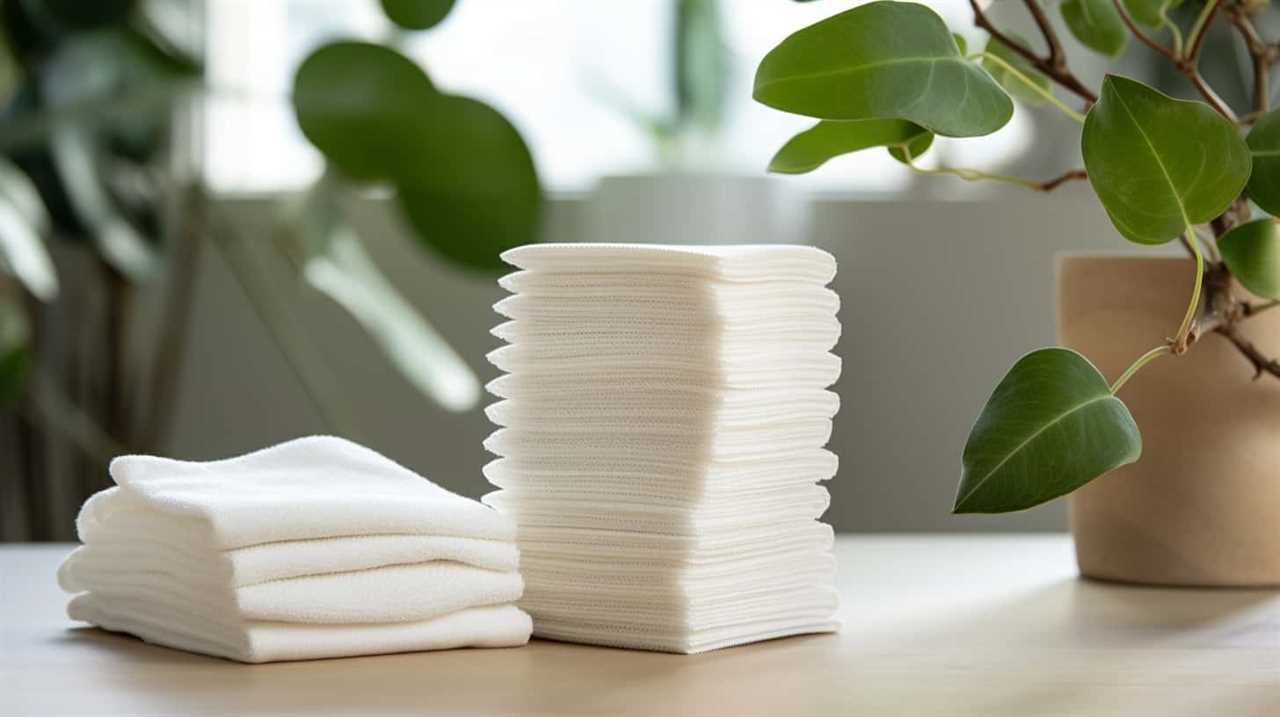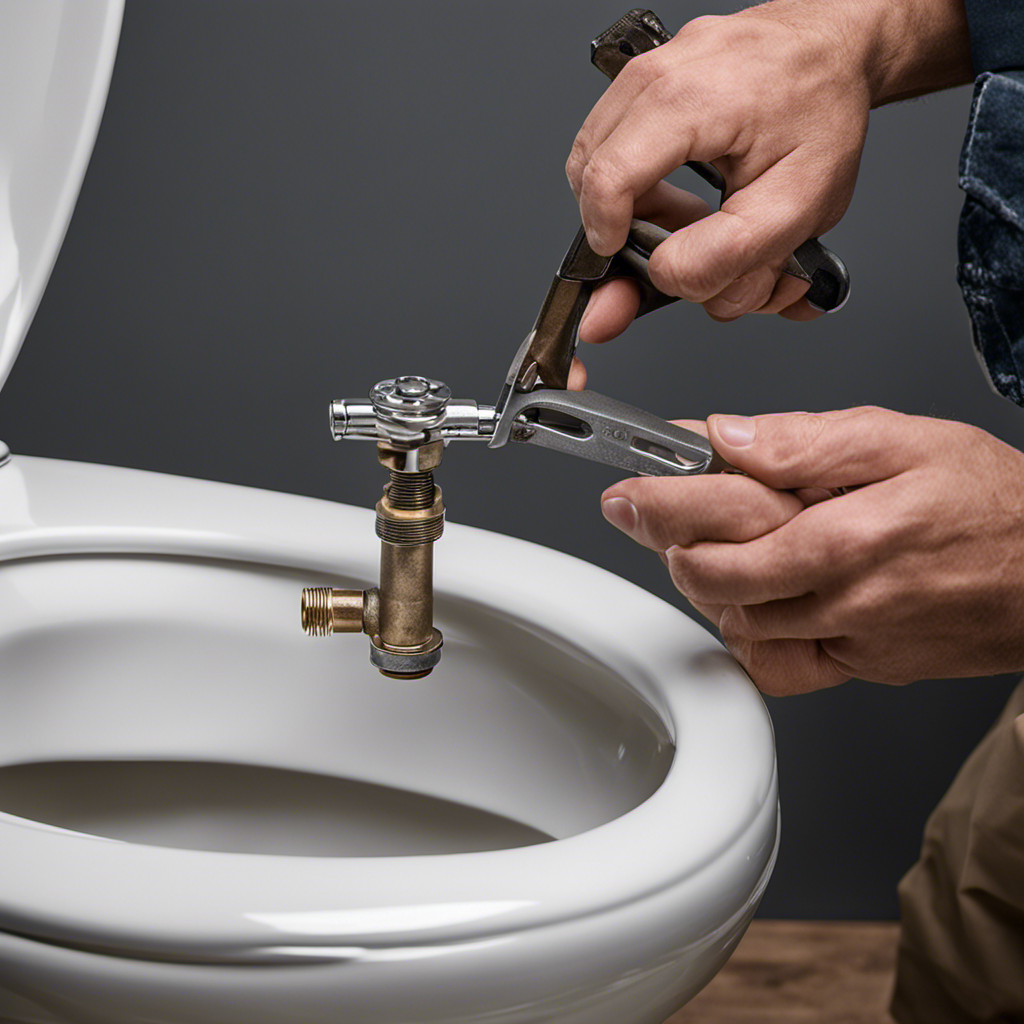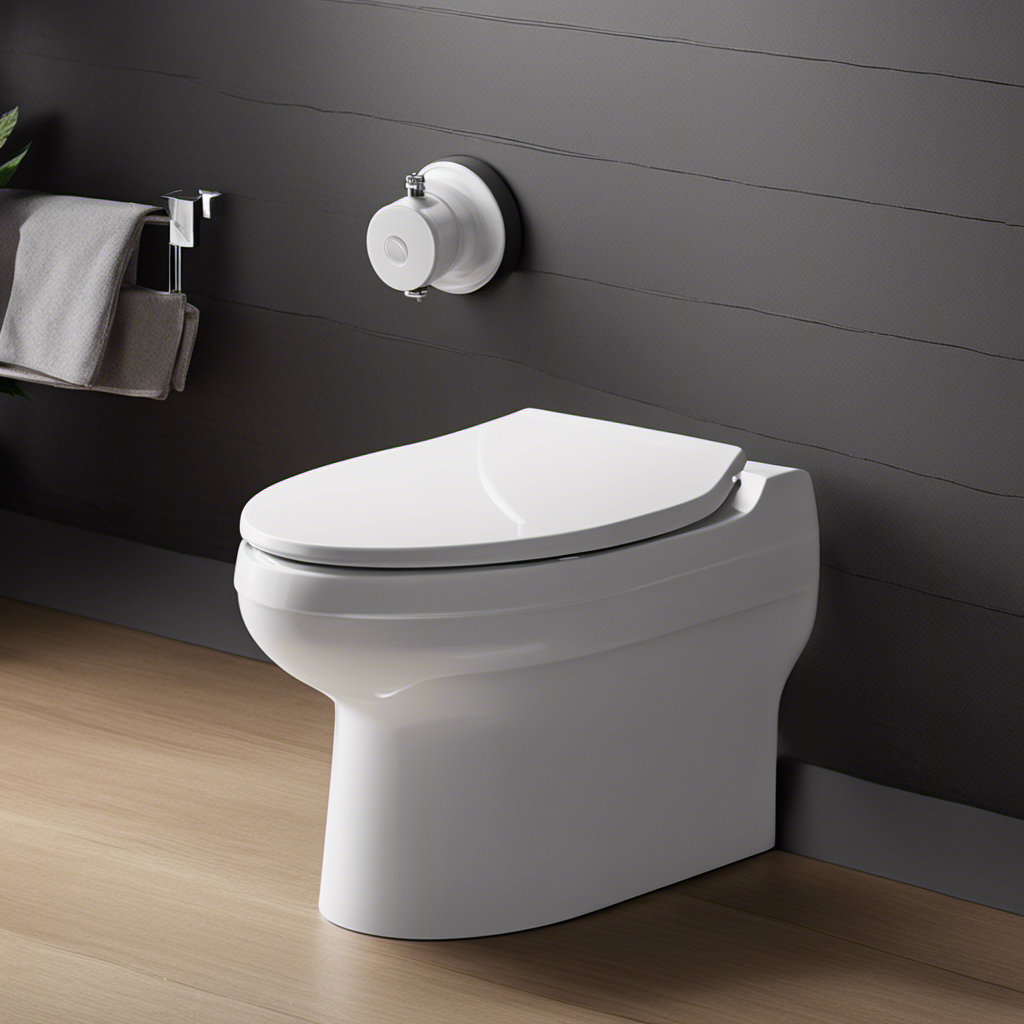Have you been overlooking an unused toilet in your home? Allow us to shed light on the possible issues that might emerge from what appears to be a harmless behavior.
Odors may linger, water may become stagnant, and the risk of plumbing issues increases. Mold and pests may find a cozy home in your neglected toilet.
Components may deteriorate, impacting water quality and efficiency. Don’t overlook the potential health concerns.
Fear not, for we have preventive measures to ensure your toilet remains in pristine condition.
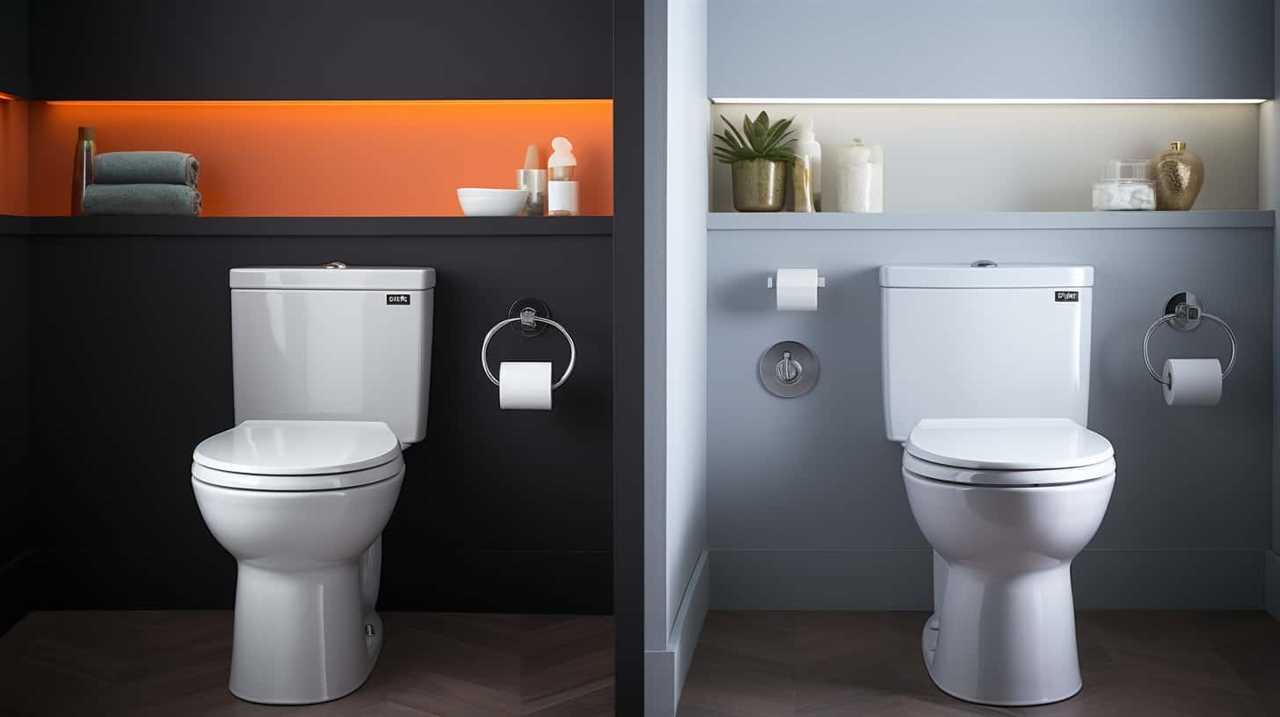
Key Takeaways
- Unused toilets can lead to unpleasant odors and water leakage.
- Stagnant water in the bowl can create a breeding ground for bacteria and mold.
- Evaporated water in the bowl can cause clogs and deterioration of seals and gaskets.
- Unused toilets promote mold and mildew growth and provide nesting opportunities for pests.
Potential Issues With Unused Toilets
Unused toilets can develop plumbing issues over time. Neglecting regular use can lead to a variety of potential costs and maintenance requirements.
When a toilet is left unused for an extended period, the water in the trap can evaporate, causing unpleasant odors to emanate from the sewer lines. Additionally, the rubber flapper seal inside the toilet tank may dry out and crack, resulting in water leakage and increased water bills.
The lack of regular flushing can also lead to the accumulation of sediment and mineral deposits, potentially causing clogs and reduced water flow.
To prevent these issues, it’s crucial to periodically flush unused toilets and perform routine maintenance tasks such as checking for leaks, cleaning the bowl, and ensuring proper functioning of all components.
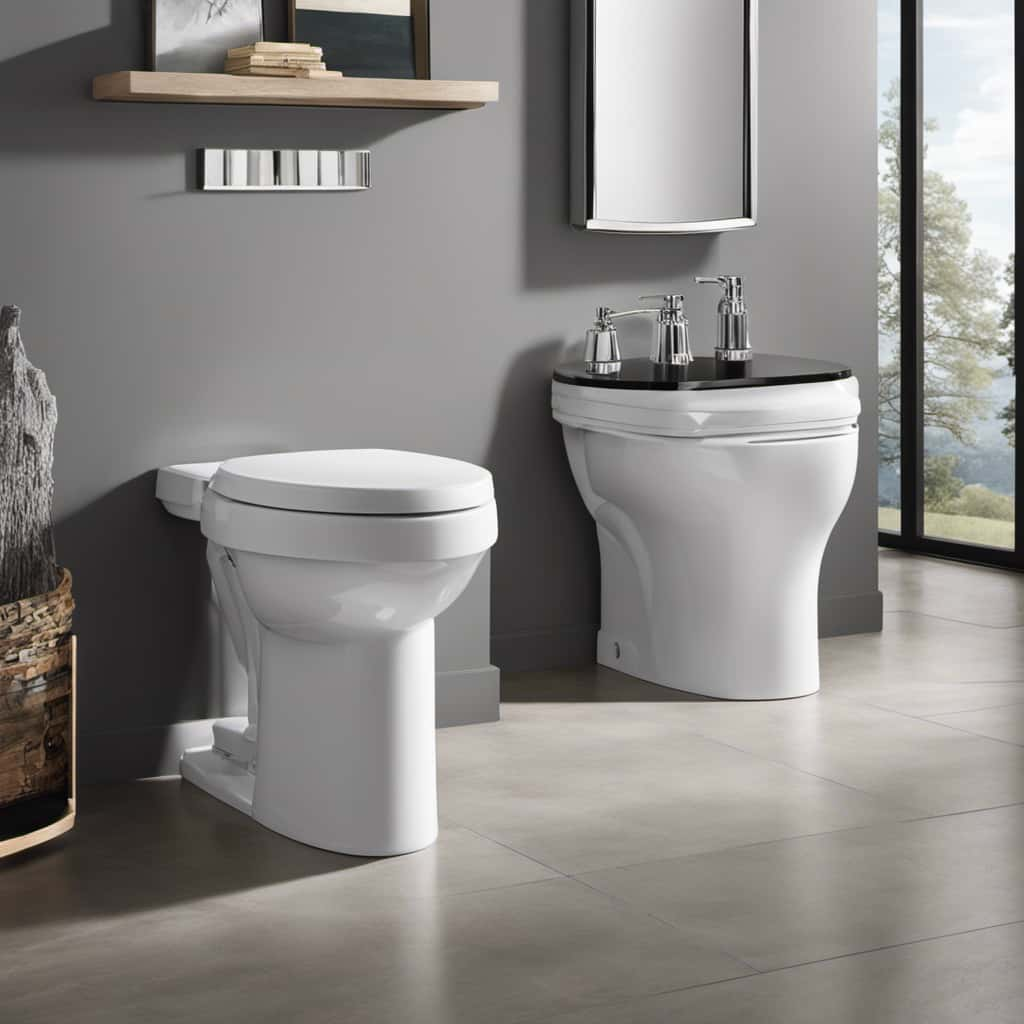
Odor Buildup and Stagnant Water
One potential issue that can arise from leaving a toilet unused is the buildup of unpleasant odors and stagnant water. When a toilet is not regularly flushed, the water in the bowl becomes stagnant, creating a breeding ground for bacteria and mold. This can lead to foul odors permeating the bathroom and potentially spreading throughout the house. To address this issue, proper odor control and preventive measures are essential. Here are some practical steps you can take to prevent odor buildup and stagnant water:
| Preventive Measures | Odor Control | Regularly flush the toilet to keep the water flowing and prevent stagnation. | Use air fresheners or deodorizers specifically designed for bathrooms. |
|---|---|---|---|
| Clean the toilet regularly to remove any residue or buildup that may contribute to odors. | Keep the bathroom well-ventilated to promote airflow and reduce moisture. | Use enzymatic cleaners that break down organic matter and eliminate odors. | Place a bowl of vinegar or baking soda near the toilet to absorb odors. |
| Check for any leaks or cracks in the toilet or plumbing that may contribute to stagnant water. | Install a toilet bowl cleaner that automatically dispenses cleaning agents with every flush. | Use activated charcoal or odor-absorbing gels to neutralize odors. | Close the toilet lid when not in use to prevent odors from escaping. |
Increased Risk of Plumbing Problems
Leaving a toilet unused can lead to an increased risk of plumbing problems, such as clogs and leaks, due to a lack of regular use and maintenance. Here are four reasons why increased maintenance is necessary to prevent plumbing issues:
- Clogs: When a toilet is unused for an extended period, the water in the bowl can evaporate, causing any residue or debris to harden and block the pipes. Regular flushing helps prevent this buildup and keeps the pipes clear.
- Leaks: Over time, the seals and gaskets in the toilet can deteriorate if not regularly used. This can lead to leaks, wasting water and potentially causing damage to your floors and walls.
- Corrosion: If the toilet isn’t flushed regularly, minerals and sediments in the water can settle and accumulate, leading to corrosion in the pipes and components. Regular use helps flush out these substances and prevents corrosion.
- Sewer gases: A toilet left unused may experience a lack of water in the P-trap, which prevents sewer gases from entering your home. This can result in foul odors and potential health risks. Regular use ensures that the P-trap remains filled with water, keeping sewer gases at bay.
To avoid these plumbing issues, it’s important to use and maintain your toilet regularly, even if it isn’t frequently used. Regular flushing and periodic checks can help prevent costly repairs and keep your plumbing system in good working condition.
Mold and Mildew Growth
Toilet non-usage can lead to the growth of mold and mildew in the bathroom. Mold and mildew thrive in damp and humid environments, making the bathroom an ideal breeding ground. When a toilet is left unused, water may evaporate from the toilet bowl, resulting in stagnant air and moisture accumulation. This stagnant environment provides the perfect conditions for mold and mildew spores to settle and grow.
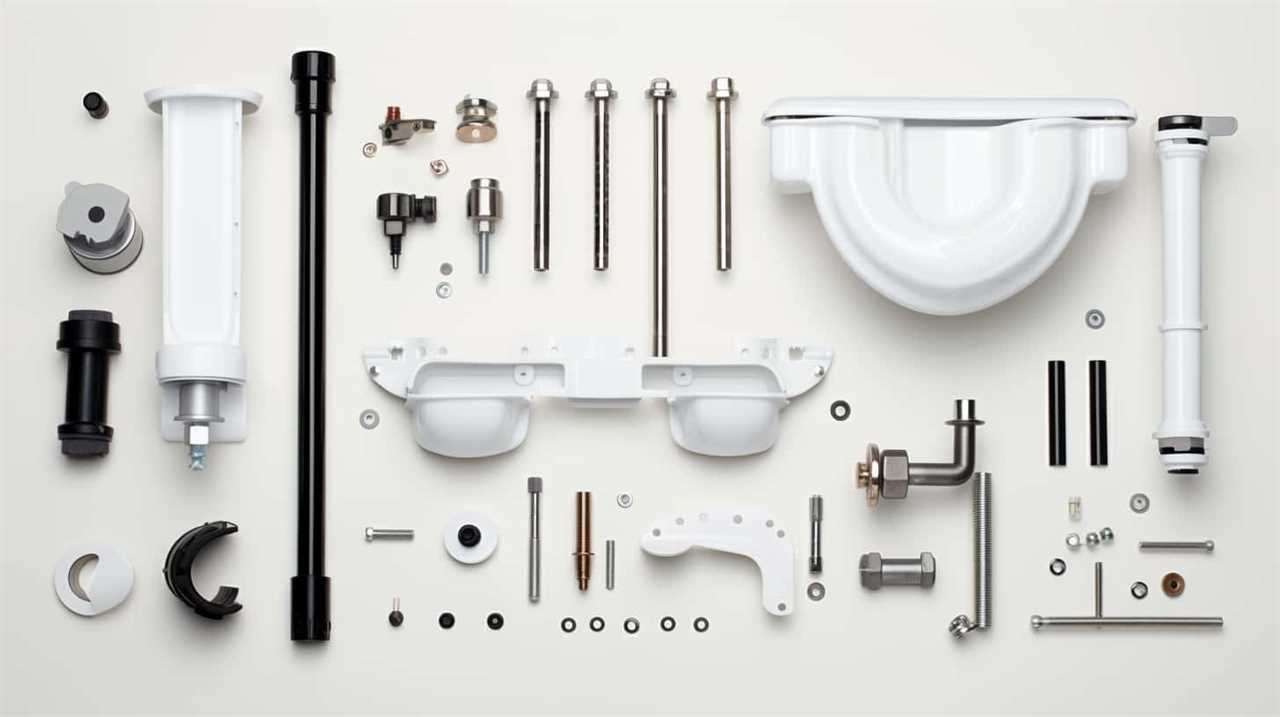
Preventing mold and mildew growth requires regular cleaning and maintenance. Start by regularly cleaning the bathroom, paying close attention to areas prone to moisture, such as the toilet bowl, tank, and surrounding surfaces. Use a mixture of bleach and water or a specialized mold cleaner to kill existing mold and mildew and prevent their regrowth.
Additionally, ensure proper ventilation in the bathroom by using exhaust fans or opening windows to reduce moisture levels and promote air circulation. By following these mold prevention and cleaning techniques, you can maintain a clean and mold-free bathroom, even when the toilet is left unused for extended periods.
Pest Infestation and Nesting Opportunities
Pests are attracted to stagnant water, making unused toilets a breeding ground for infestation. When a toilet is left unused for extended periods, it provides an ideal environment for pests like flies, mosquitoes, and cockroaches to thrive.
Additionally, the stagnant water in the bowl and tank offers nesting opportunities for these pests, further increasing the risk of infestation.

Pest Attraction and Infestation
We need to be aware of the potential for pests to be attracted and infest the area around an unused toilet. Neglecting pest prevention and plumbing maintenance can create an ideal environment for pests to thrive.
Here are four reasons why an unused toilet can attract pests and lead to infestation:
- Moisture: Standing water in the toilet bowl or leakage from the plumbing can create a damp environment that attracts pests like cockroaches and mosquitoes.
- Food sources: Leftover residue or particles in the toilet can serve as a food source for pests, such as flies and ants, leading them to infest the area.
- Nesting opportunities: The dark and secluded space around an unused toilet can provide a perfect nesting spot for pests like rats and mice.
- Plumbing access: Pests can use the plumbing system to enter your home, especially if there are cracks or openings around the toilet.
To prevent pest attraction and infestation, it’s crucial to regularly clean and maintain your toilet, fix any plumbing issues, and seal any openings or cracks around the toilet area.
Nesting in Stagnant Water
One potential issue with leaving a toilet unused is the potential for pests to nest in stagnant water. Stagnant water provides an ideal breeding ground for various pests, including mosquitoes, flies, and cockroaches. These pests are attracted to the water as it offers them a source of hydration and a place to lay their eggs.
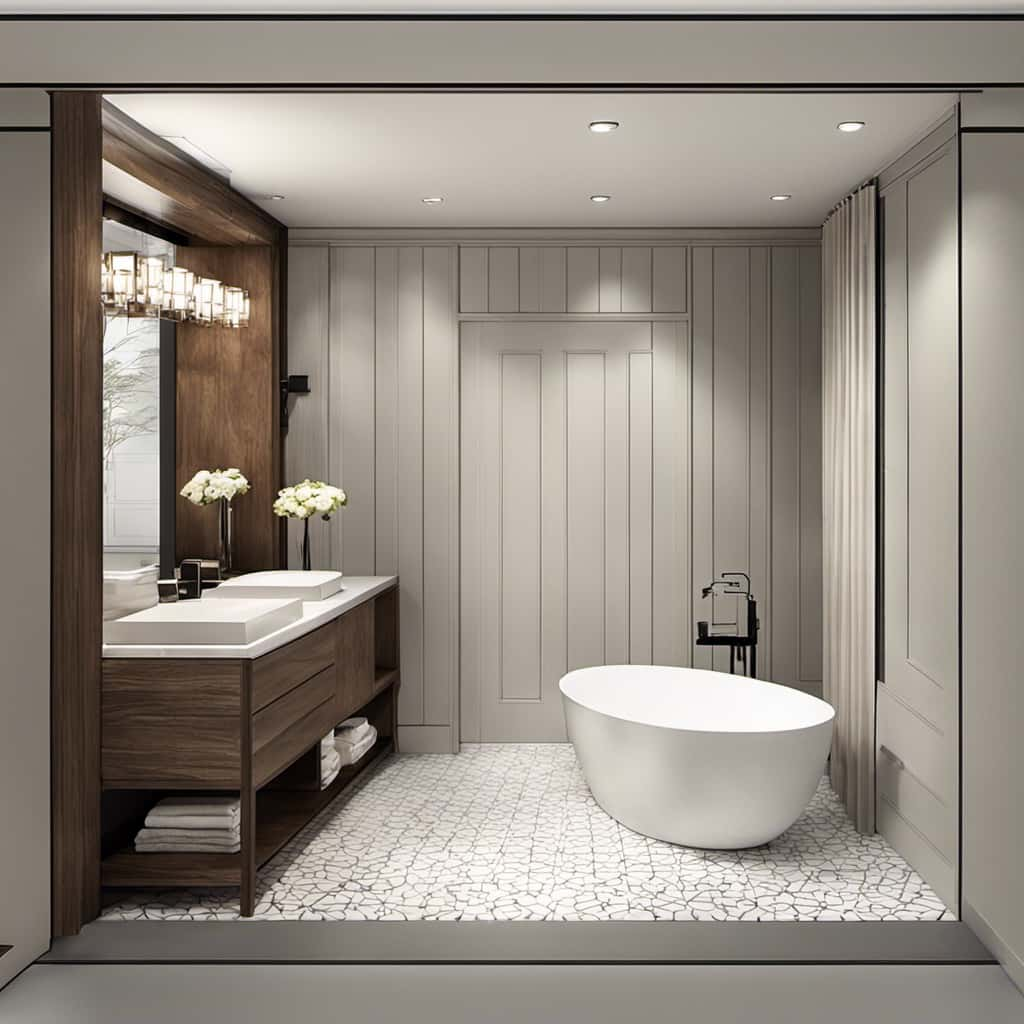
However, this poses a significant risk to human health. Stagnant water can become a breeding ground for bacteria and other harmful microorganisms, leading to the growth of waterborne diseases. Additionally, when pests make their nests in the toilet, they can further contribute to the growth of bacteria and spread it to other areas of the house.
To prevent these issues, it’s essential to regularly flush and clean unused toilets to prevent stagnant water and eliminate potential nesting opportunities for pests.
Risks of Unused Toilets
Discussing the risks of leaving a toilet unused, it’s important to address the potential for pest infestation and nesting opportunities. Neglecting toilets can create an environment that attracts pests and provides them with a place to nest. Here are four reasons why maintaining unused toilets is crucial:
- Pest infestation: Stagnant water in an unused toilet can attract various pests, such as mosquitoes, flies, and cockroaches. These pests not only pose a health risk but can also be difficult to eradicate once they establish a nesting site.
- Nesting opportunities: Unused toilets with stagnant water provide an ideal breeding ground for pests. Mosquitoes, for example, lay their eggs in water, and stagnant toilet water can become a prime location for their larvae to develop.
- Spread of diseases: Pests that infest unused toilets can carry harmful bacteria and viruses, potentially spreading diseases to humans. This poses a significant health risk, especially if the infestation goes unnoticed.
- Structural damage: Pests like termites may be attracted to the moisture in unused toilets, leading to potential structural damage over time. This can result in costly repairs and compromise the integrity of your home.
To prevent these risks, regular maintenance and cleaning of unused toilets are essential. Flushing the toilet periodically, ensuring proper ventilation, and sealing any cracks or openings can help keep pests at bay and maintain a healthy environment.
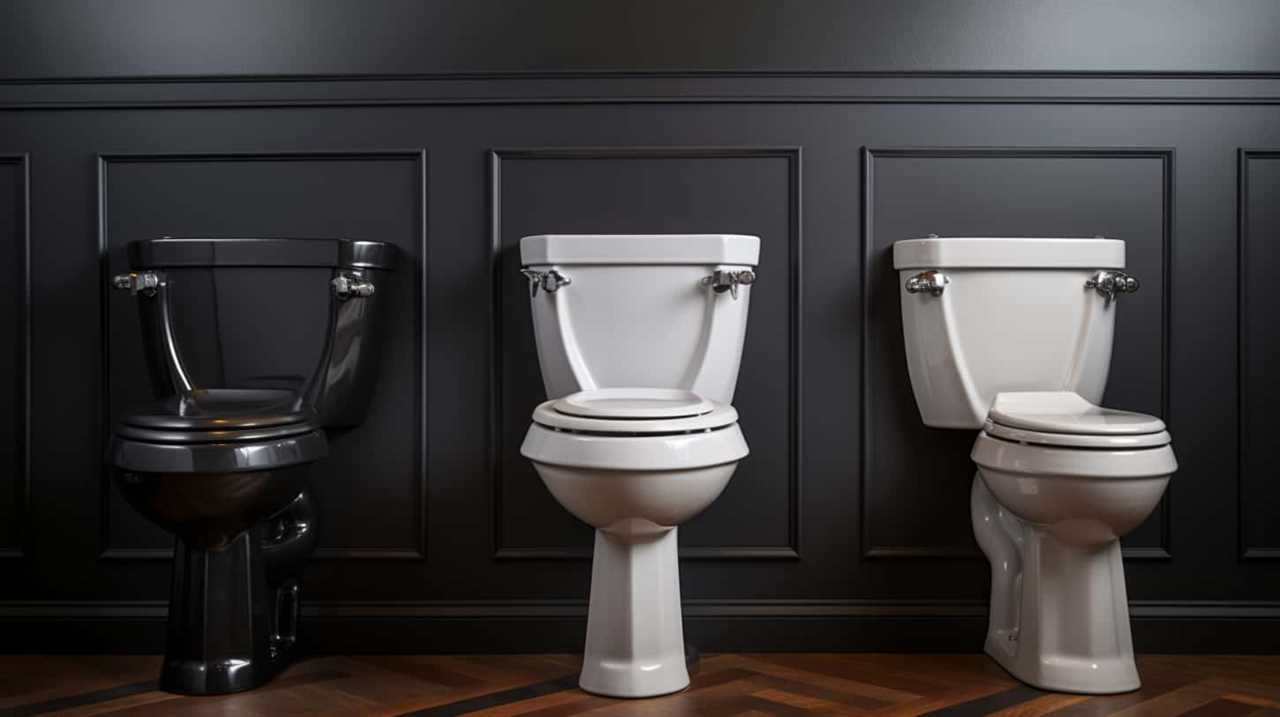
Water Stains and Mineral Deposits
How can water stains and mineral deposits form in a toilet that’s left unused?
When a toilet isn’t regularly used, water can sit stagnant in the bowl, leading to the development of water stains. These stains occur when minerals in the water, such as calcium and magnesium, are left behind as the water evaporates. Over time, these minerals can build up and result in unsightly and stubborn stains.
The accumulation of mineral deposits can also occur in the toilet tank, especially in areas with hard water. These deposits can affect the proper functioning of the toilet components, such as the fill valve and flush mechanism. Therefore, it’s important to regularly clean and maintain a toilet, even if it isn’t frequently used, to prevent the formation of water stains and mineral deposits and avoid the deterioration of toilet components.
Now, let’s explore the next section – the deterioration of toilet components.
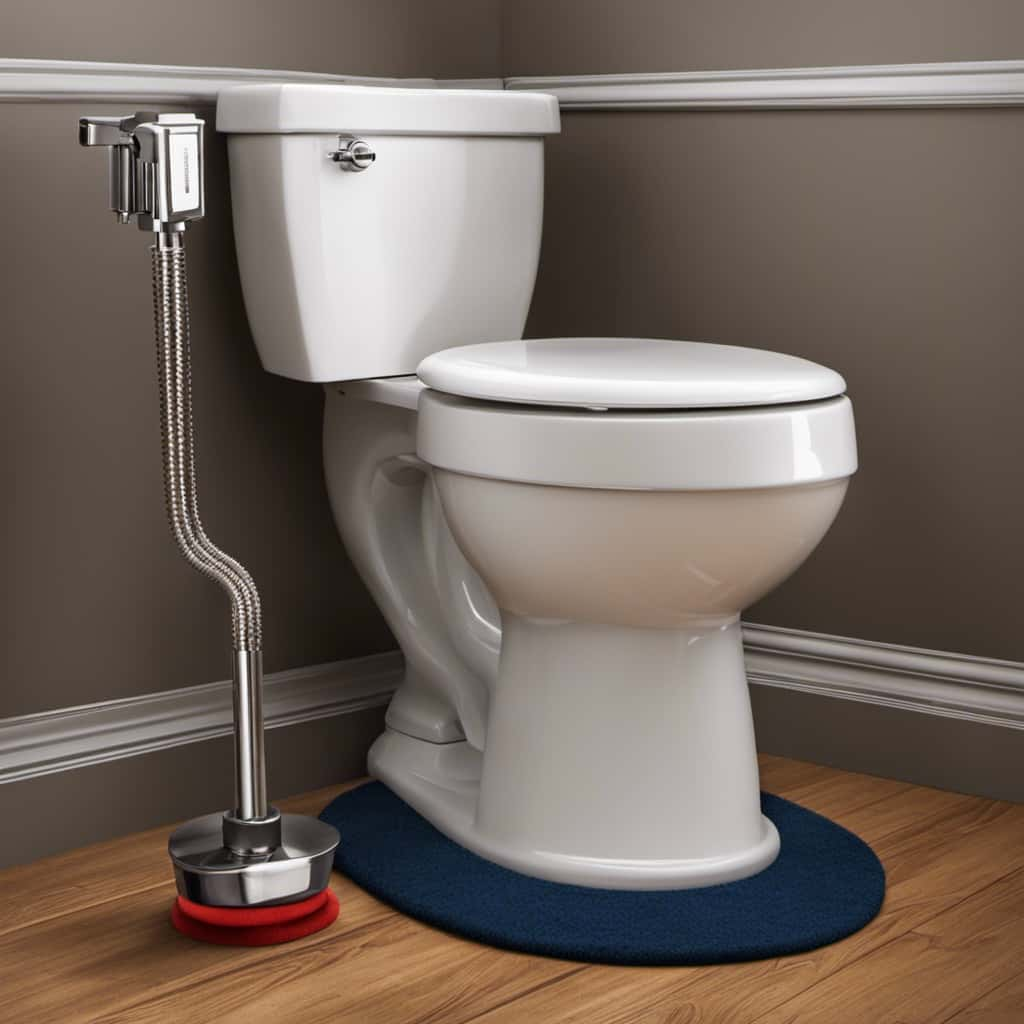
Deterioration of Toilet Components
Toilet components can deteriorate when a toilet is left unused for extended periods of time. Proper toilet maintenance is crucial to prevent plumbing issues and ensure that the toilet functions efficiently when it’s needed. Here are four key reasons why toilet components can deteriorate without regular use:
- Drying out of seals and gaskets: When a toilet is unused, the water in the bowl and trap can evaporate, causing the seals and gaskets to dry out and become brittle.
- Corrosion of metal parts: Moisture and stagnant water can lead to corrosion of metal components like bolts, hinges, and flush valves, compromising their functionality.
- Build-up of mineral deposits: Without regular flushing, mineral deposits can accumulate in the toilet bowl, tank, and pipes, leading to clogs and reduced water flow.
- Damage from pests: Unused toilets can become attractive nesting grounds for insects and rodents, causing damage to toilet components and plumbing.
Understanding the potential deterioration of toilet components due to extended periods of non-use highlights the importance of regular toilet maintenance.
Now let’s explore the impact on water quality and efficiency.
Impact on Water Quality and Efficiency
Leaving a toilet unused can have a significant impact on the quality and efficiency of water usage. When a toilet isn’t regularly flushed, water can become stagnant, leading to a decrease in water quality. Stagnant water can also create a breeding ground for bacteria and other harmful microorganisms, posing a health risk.

Additionally, unused toilets can contribute to water wastage, as the water in the bowl evaporates over time. This can result in higher water bills, as more water will be required to refill the bowl when it’s eventually used.
To ensure water conservation and maintain efficient water usage, it’s recommended to flush unused toilets periodically to prevent water stagnation and minimize the impact on water bills.
Potential Health Concerns
When toilets aren’t regularly used, there can be potential health concerns due to the accumulation of bacteria and other harmful microorganisms in stagnant water. These potential health risks and sanitation concerns shouldn’t be taken lightly.
Here are four important points to consider:
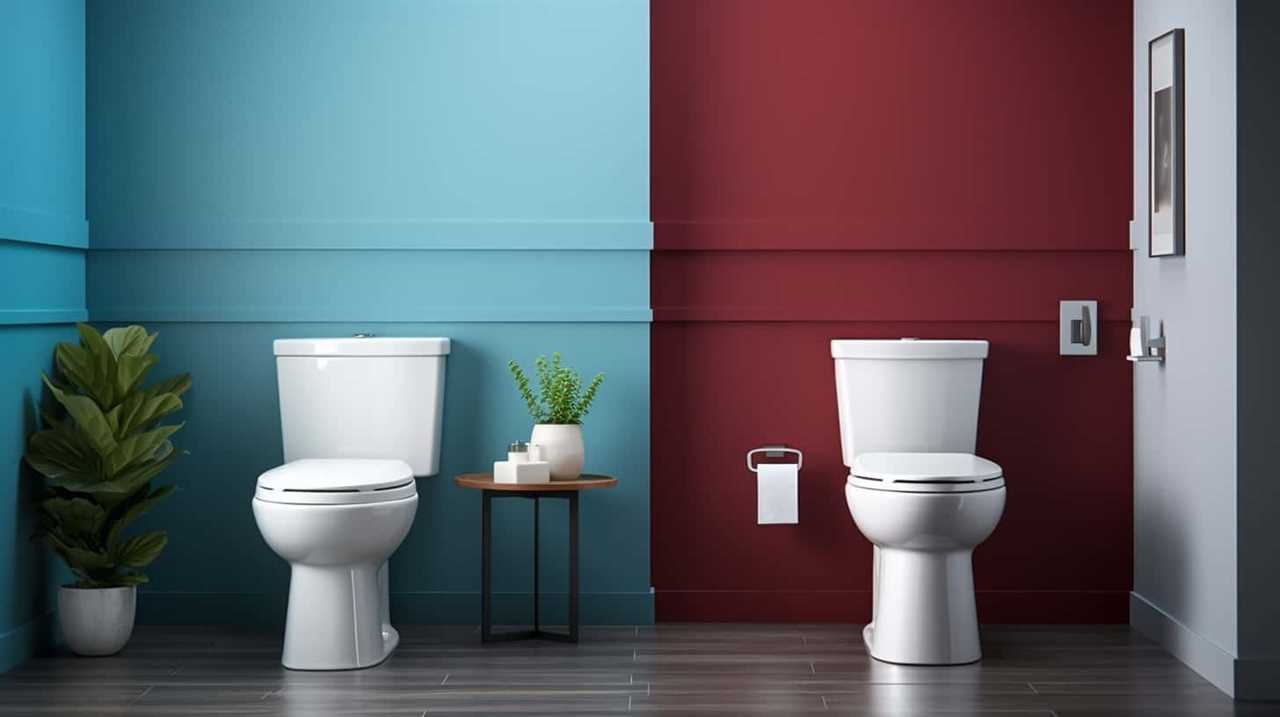
- Bacterial growth: Stagnant water in unused toilets provides an ideal breeding ground for bacteria, including harmful strains such as E. coli and Salmonella.
- Odor and air quality: The lack of water flow can lead to unpleasant odors and compromised indoor air quality, potentially affecting respiratory health.
- Mold and mildew: Moisture buildup in the toilet bowl and tank can promote the growth of mold and mildew, which can trigger allergies and respiratory problems.
- Pest attraction: Stagnant water also attracts pests like mosquitoes, which can carry diseases like dengue fever and Zika virus.
Considering these potential health risks, it’s crucial to take preventive measures to maintain the cleanliness and hygiene of unused toilets.
[Transition sentence: Now let’s explore some preventive measures for unused toilets.]Preventive Measures for Unused Toilets
When it comes to preventing water stagnation in unused toilets, there are a few measures that can be taken.
One option is to flush the toilet at least once a week to keep the water moving and prevent any build-up.
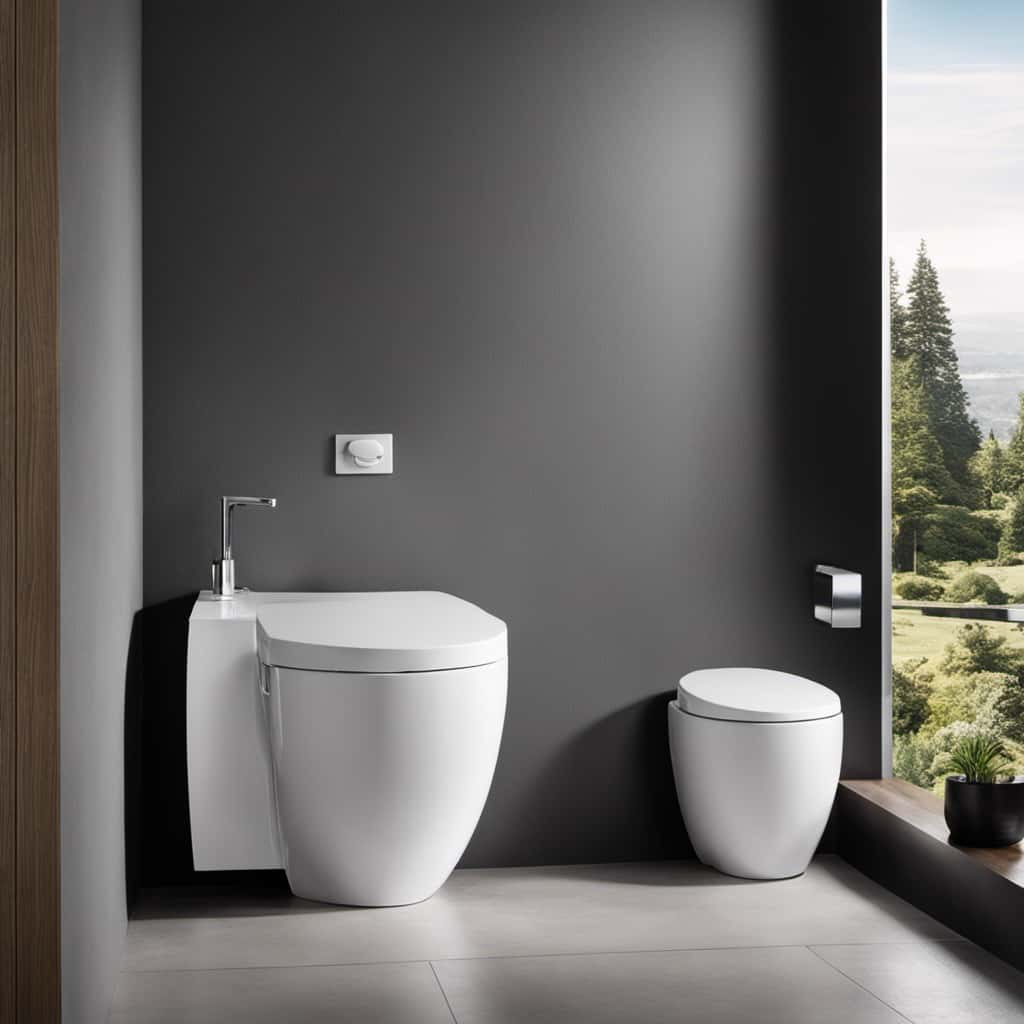
Additionally, using toilet bowl cleaners or tablets specifically designed to control odors can help keep the toilet fresh during periods of non-use.
Water Stagnation Risks
To prevent water stagnation, we regularly flush unused toilets at least once a week. Water stagnation can lead to the growth of bacteria and other harmful microorganisms, increasing the risk of waterborne diseases.
Here are some preventive measures for unused toilets:
- Install a toilet tank cleaner: These devices release cleaning agents into the tank to prevent the growth of bacteria and algae.
- Use toilet bowl deodorizers: These products help maintain a fresh smell in the bathroom while also preventing the buildup of bacteria.
- Inspect and repair leaks: Check for any leaks in the toilet’s plumbing system and fix them promptly to prevent water accumulation.
- Consider a plumbing maintenance schedule: Regularly inspect the toilet’s components, including valves and seals, to ensure they’re functioning properly and prevent any issues that may lead to water stagnation.
Odor Control Methods
To address odor control in unused toilets, we can implement a few simple measures.

Proper toilet maintenance is essential to prevent unpleasant odors from developing. Regular cleaning techniques, such as using disinfectant cleaners and scrubbing the toilet bowl, can help eliminate any bacteria or mold growth that may contribute to odor.
Additionally, it’s important to keep the toilet lid closed when not in use to prevent odors from spreading. Flushing the toilet periodically, even if it isn’t being used regularly, can also help prevent stagnant water and potential odor buildup.
Lastly, using air fresheners or placing odor-absorbing materials, such as baking soda or activated charcoal, near the toilet can help keep the area smelling fresh.
Frequently Asked Questions
Can Leaving a Toilet Unused for a Long Period of Time Affect the Quality of the Water in the Toilet Tank?
Leaving a toilet unused for a long time can impact water conservation and have environmental implications. The quality of water in the toilet tank may deteriorate due to stagnation, potentially leading to odors and the growth of bacteria.

Are There Any Health Concerns Associated With Not Using a Toilet for an Extended Period of Time?
There are potential hygiene risks associated with not using a toilet for an extended period of time. It can lead to bacterial growth and unpleasant odors. Additionally, it can have an impact on the plumbing system, causing blockages and damage.
What Are Some Preventive Measures That Can Be Taken to Ensure an Unused Toilet Remains Clean and Functional?
To keep an unused toilet clean and functional, use appropriate cleaning products, such as disinfectant sprays or toilet bowl cleaners. Prevent odor buildup by periodically flushing with water and using odor-control products like deodorizing tablets.
Can Leaving a Toilet Unused Cause Any Damage to the Toilet Components or Plumbing System?
Leaving a toilet unused can potentially cause damage to its components and the plumbing system. It is necessary to flush an unused toilet occasionally to prevent any issues from arising.
Is There a Recommended Frequency for Flushing an Unused Toilet to Prevent Potential Issues?
There is a recommended flushing frequency for an unused toilet to prevent potential issues. Regular flushing helps maintain the proper functioning of the toilet components and the plumbing system.

Conclusion
So there you have it, folks! Leaving a toilet unused may seem harmless, but the potential issues that can arise are nothing to flush away.
From odor buildup to plumbing problems, mold growth to pest infestations, the consequences are downright crappy.
So, take care of your porcelain throne and keep it in tip-top shape. Trust me, your nose, your plumbing, and your sanity will thank you.
Happy flushing!

